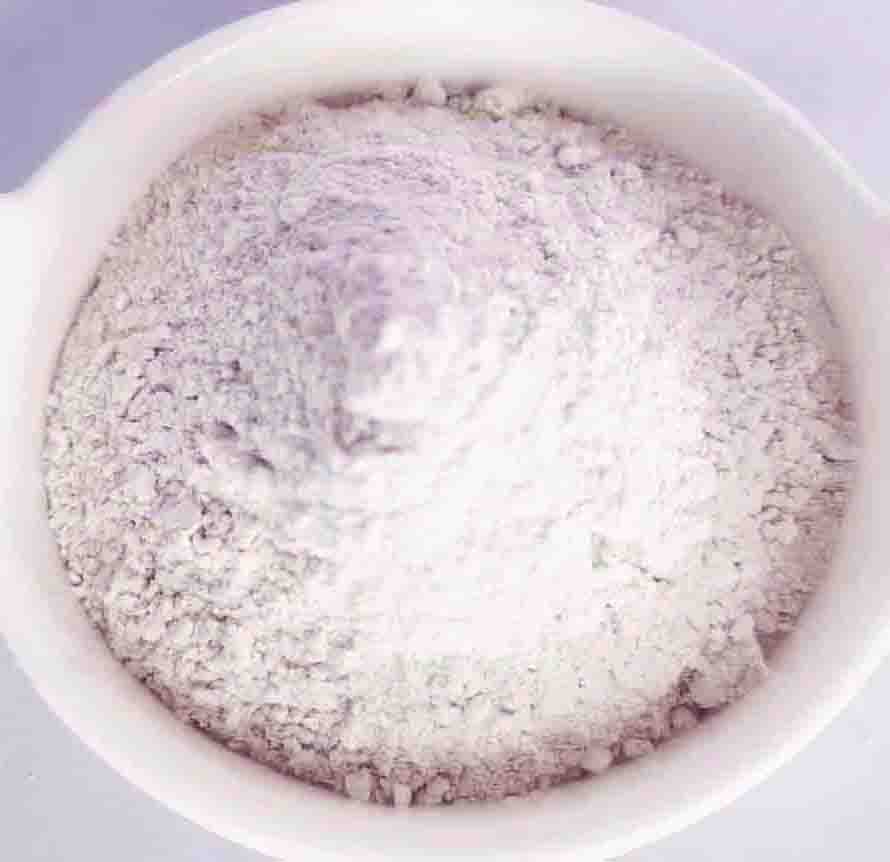Anti Sedimentation Agent
Organoclay offers unique advantages as an anti-sedimentation additive. It consists of clay minerals, such as montmorillonite, that have been chemically modified with organic molecules. This modification imparts special properties to the clay, enhancing its dispersibility and suspension stability.
The organic molecules in organoclay act as spacers between the clay layers, preventing them from stacking together and facilitating easy dispersion of the particles in the liquid medium. This creates a physical network within the suspension, which is strong enough to counteract the gravitational force acting on the particles.
Organoclay offers excellent compatibility with a wide range of materials. This includes pigments, fillers, and both organic and inorganic compounds. It can be incorporated into various formulations. These can be used as anti-settling additives in paints, coatings, adhesives, and sealants, to improve their storage stability and prevent issues like pigment drying and solidification during prolonged storage periods. Organoclay anti-settling additives ensures that the products remain in a usable state for an extended duration.
Sedimentation Defined
When a solid-liquid mixture is left undisturbed, the force of gravity acts upon the solid particles, causing them to gradually sink towards the bottom of the container. These sinking particles are known as sediments. Sedimentation occurs because of the disparity in density between the solid particles and the surrounding liquid.
The rate at which sedimentation takes place depends on several factors like the size, shape, and density of the solid particles. This also affects the viscosity of the liquid medium. Larger and denser particles tend to settle more rapidly than smaller and less dense particles. Higher viscosity of the liquid slows down the settling process.
Preventing Sedimentation
Organoclay acts as an anti-sedimentation agent by enhancing the rheological characteristics of the paint or ink formulation. When introduced into the liquid medium, the organoclay particles disperse and create a three-dimensional network structure. This network effectively resists the gravitational force acting on the solid particles, preventing them from settling and forming sediments.
The modification of clay minerals with organic molecules in the organoclay process plays a crucial role in enhancing its anti-sedimentation properties. The organic molecules act as spacers between the clay layers, preventing their aggregation and facilitating better dispersion in the liquid medium. This dispersion allows for a more uniform distribution of solid particles, reducing the likelihood of sedimentation during storage.
The physical network created by organoclay provides stability to the paint or ink, ensuring that the solid particles remain suspended and well-dispersed. This contributes to the overall quality and appearance of the final product. The use of organoclay as anti-settling agent for paints helps preserve the homogeneity and performance. This makes it suitable for sale even after prolonged storage periods.
Organoclay Rheology Additives |Anti Sedimentation Agent
Organoclay rheology additives has high efficiency and have the ability to impart significant changes in the rheological properties of the formulation with relatively low dosage levels. Even at low concentrations, organoclay additives can deliver substantial improvements in viscosity, thixotropy, and suspension stability.
Organoclay as Anti Sedimentation Agent contribute to the formation of gels with light color and high clarity. This is desirable in applications where visual aesthetics are important in transparent coatings or clear formulations. This creates visually appealing gels enhances the overall quality and appearance of the end product. Also, unlike some other rheology modifiers, organoclay additives do not require a pregel step. Manufacturers can directly incorporate the organoclay additive into their formulation.
Organoclay as Anti Sedimentation Agent eliminate the need for polar activators. They are commonly used to activate other rheology modifiers. Polar activators can introduce additional complexity to the formulation process and may have compatibility issues with certain systems. Organoclay as Anti Sedimentation Agent exhibit a predictable and consistent impact on the rheological properties of the formulation. This enables formulators to achieve the desired viscosity, thixotropy, and suspension stability consistently, leading to reliable and repeatable results.
It can be used for post-correction purposes. If a formulation requires adjustments to its rheological properties after initial formulation, organoclay additives can be added to achieve the desired modifications. This flexibility allows for fine-tuning and optimization of the formulation to meet specific requirements.
Anti Settling Agent Applications
Organoclay Anti Sedimentation Agent serves as an effective anti-settling agent in various applications. Its ability to form a network that suspends solid particles prevents settling and improves storage stability. This is effective in preventing the settling of solid particles in liquid systems, ensuring improved stability and performance.
- Anti Settling Agent For Oil Drilling Mud
- Anti Settling Agent For Solvent Based Paints
- Anti Settling Agent For Oil Field Cement
- Anti Settling Agent For Solvent Based Grease
- Anti Settling Agent For Nail Polish
- Anti Settling Agent For Solvent Based Inks
- Anti Settling Agent for Water Based Paints
Improving Yield Stress in your Paint & Coating Systems
Having sufficient yield stress in paint formulations is essential for several reasons. Firstly, it helps maintain the desired consistency and prevent sagging or dripping when the paint is applied to vertical surfaces. A higher yield stress ensures that the paint adheres to the intended surface and retains its shape, resulting in a more controlled application and better overall appearance.
A paint with a high yield stress exhibits improved storage stability. The strong internal network created by the higher yield stress resists settling and sedimentation of the solid components in pigments and fillers during storage. This prevents the formation of clumps or aggregates and ensures the homogeneity of the paint. Paints with low yield stress may experience phase separation or sedimentation. It leads to quality issues and the need for additional mixing or rework.
Enhancing the yield stress in paint and coating systems can be achieved through various approaches. One common method is the addition of rheology modifiers or thickeners to the formulation. These Anti Sedimentation Agent work by increasing the viscosity and creating a more robust network structure within the paint. They help to immobilize the solid particles and enhance the yield stress, resulting in improved resistance to flow or deformation.
The choice of rheology modifiers depends on the specific requirements of the paint system. Different types of thickeners like associative thickeners or clay-based Anti Sedimentation Agent. This offers varying degrees of yield stress enhancement. Associative thickeners function by forming temporary bonds within the paint matrix, contributing to a more structured network. Clay-based Anti Sedimentation Agent create a physical network through platelet stacking, reinforcing the yield stress of the paint.
Improving Anti-Sag Without Sacrificing Leveling
In formulations with high polarity, the use of organoclay Anti Sedimentation Agent can be beneficial for improving anti-sag properties. Organoclay additives, which are modified clay minerals with organic molecules, can enhance the rheological properties of the coating or paint. They create a physical network within the formulation that helps to immobilize the pigments and prevent sagging.
Organoclay Anti Sedimentation Agent function by increasing the viscosity of the formulation. This helps in reducing sagging. They provide thixotropic behavior, meaning the viscosity decreases under shear stress during application and recovers when the stress is removed after application. This thixotropic behavior allows the coating or paint to flow smoothly during application, while maintaining stability and anti-sag properties when at rest.
As the shear rate increases during application, the elastic modulus of the formulation increases. This increase in the elastic modulus can contribute to better leveling by minimizing excessive flow and ensuring the coating remains in place on vertical surfaces. Formulators need to evaluate and adjust the amount of organoclay Anti Sedimentation Agent and other rheological modifiers based on the specific requirements of the coating or paint system.
Clay Platelets as Anti-Sedimentation and Anti-Settling |Anti Sedimentation Agent
When incorporated into a paint formulation, clay platelets work by creating a three-dimensional network or structure that helps to suspend and disperse solid particles. The platelets stack upon each other, forming interlocking layers that resist the settling caused by gravitational forces. This network acts as a barrier. This prevents the solid particles from sinking to the bottom and forming sediments.
Smectite clays like bentonite clay are known for their exceptional swelling and delamination properties. When these clays come into contact with a liquid medium, they can undergo a process called delamination, where the stacked layers separate and disperse throughout the medium. This delamination process exposes a larger surface area of the clay platelets, leading to improved interactions with the surrounding particles and enhanced anti-settling properties.
To further enhance the anti-settling and anti-sedimentation properties of clay platelets, organoclay Anti Sedimentation Agent are often utilized. These additives are created through the modification of clay platelets with organic molecules. The organic molecules act as spacers and it preventing the platelets from stacking too closely together and facilitating their dispersion within the liquid medium.
Anti Sedimentation Agent
We always deeply believe that organic bentonite is an ideal anti-sedimentation agent. When you use it in paint, whether it is solvent-based paint or water-based paint, its anti-sedimentation performance will not let you down. At the same time, the thixotropy is particularly ideal, and the rheology is also worthy of your expectation.We expect your inquiry about our Anti Sedimentation Agent.


